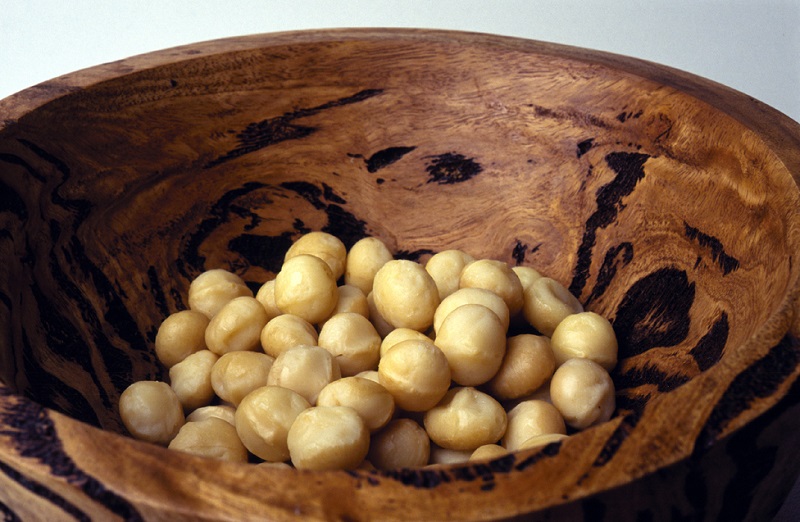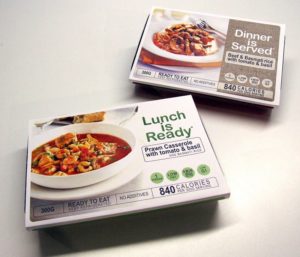And what's the best way to serve it? Some tips on becoming Asia's delicatessen food bowl.

Some delicious macadamias. Is Australia positioned to become Asia’s delicatessen food bowl?
How exciting was it to see the first international flight leave Brisbane West Wellcamp Airport in Toowoomba last week laden with high value food products for Asia?
Frozen and chilled beef, pecans and macadamias, mangoes, organic chicken and ready to eat lettuce and baby spinach from local producers went to Hong Kong and Shanghai.
The airport is a $200 million private investment by Toowoomba’s Wagner family and purpose built for export with the view to sending Australian foods from South East Queensland and the surrounding regions direct to Asia’s tables. This first flight by Cathay Pacific was a test but the Wagners are working on establishing a regular schedule to China.
This is a new channel for exports from a highly productive agricultural area. It’s a great example of the way in which Australia could be growing its exports as we move from a predominantly lower value commodity base to high value food products. This new channel potentially gets our premium foods to Asian plates faster than if transported via other Australian ports first. In fact, local lettuce and salad producer Anne Story told media on the day of the flight that this could mean they get product to consumers in Asia faster than they can get product to consumers in Melbourne.
So why is Asia so hungry for our food?
Australia’s food is known to be among the best in the world. It is premium quality, healthy and often packaged in highly convenient ways. Demand from Asian consumers for products like premium chilled meat portions, wine, fruit and vegetables has been growing for some time. Demand for Australian made infant formulas has also surged for the same reasons.
When the China-Australia Free Trade Agreement comes into force, 95% of Australian exports to China are expected to be tariff free and should give the Australian food and beverage industry, among others, even more of an export boost.
Australian food manufacturers are growing in their knowledge of what Asian consumers want in their foods, such as their preferred flavours, textures, appearance, packaging, eating occasions and gifting occasions. The challenge for manufacturers now is to gain a sophisticated understanding of how they can meet the needs of the Asian consumer.
Australia shouldn’t be the ‘food bowl’ to Asia as a mere supplier of calories.
We’re working closely with the Queensland government and food companies in the surrounding regions to develop innovative, value-added products that are healthy, safe, convenient and sustainably produced. Our national expertise in consumer insights, particularly for Asian markets, is a valuable resource for food manufacturers in the region. Our Brisbane Food Innovation facility, coupled with the new export landscape such as the Wellcamp Airport, offers much opportunity for the region’s food and agriculture industries.
Australia shouldn’t be the ‘food bowl’ to Asia as a mere supplier of calories. It’s the ‘delicatesson’ to Asia, a provider of high quality, high value-added products. Admittedly, most of Australia’s current exports are still only processed to the extent necessary to stabilise them or provide a convenient format for transport. However, we should work towards providing value-added, premium, select food and beverage products to the rising Asian middle classes who have the desire and ability to pay for them.
What do we mean by premium, value-added food products? A good example is ready-to-eat meals. Ready-to-eat meals are not the TV dinners of old – now they can be chef-designed, highly nutritious packages that meet consumer demands for convenience, ease and nutrition. Meals are multi-component products, and as such they bring together opportunities to add value to horticultural produce such as vegetables, meat and sometimes seafood, pastas and rice.

Premium ready-to-eat meals.
This month’s Frost and Sullivan market insight report, ‘Review of Ready-to-Eat Meal Products Market in Asia Pacific’, estimates that the total revenue from the ready-to-eat meals category will grow from US$3.2 billion in 2014 to US$4.7 billion in 2021, a growth rate of 5.7% per annum. The drivers for this growth are increasing urbanisation, purchasing power and an interest in ethnic foods.
However, the report also states that there is an underpinning need to develop better technologies to improve the storage and shelf life of the category. Meals are technically challenging because they comprise a range of different food components. CSIRO is introducing new technologies such as high pressure processing to support the development of high quality, shelf stable, extended shelf life ready-to-eat meals. Our Total Wellbeing Diet is also helping design meals and ensure they are targeted to optimise health and nutrition.
The Brisbane West Wellcamp Airport opens up exciting thinking for other regions who might contribute to exporting innovative food products. It’s an example of how to think differently and change the opportunity landscape. But to make the most out of this hunger of Asia’s for our food products, let’s make sure we innovate along the way.
Find out more about our Food Innovation Centres on our website.


24th March 2020 at 9:27 pm
Australian government’s first priority should be to meet the local demand.
Pingback: How local produce is reaching Asia's tables before Melbourne's - Energy Makeovers